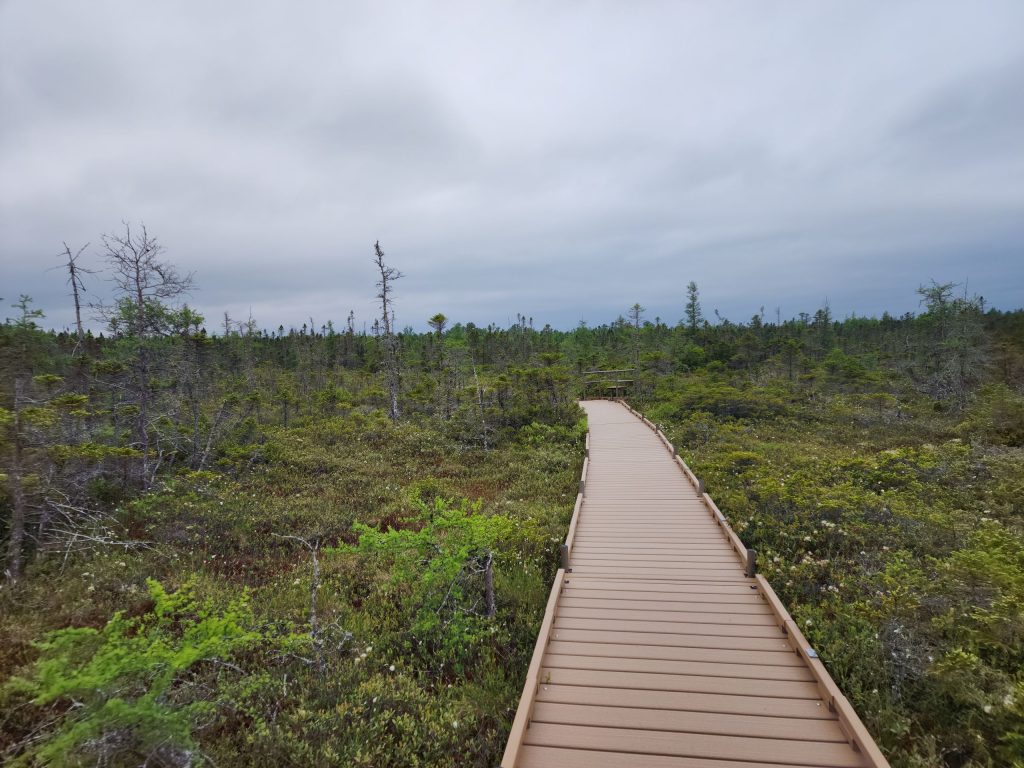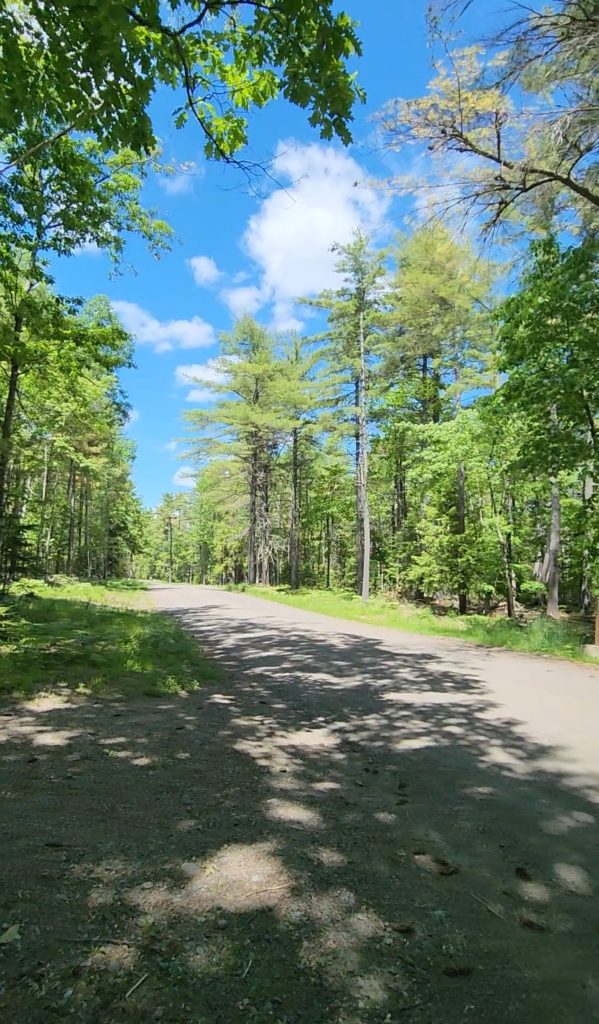Physical Accessibility
Adventuring with mobility challenges
What Makes a Trail Physically Accessible:
Local Wheelchair Accessible Trails:
On campus, in the Dwight B. Demeritt Forest the Connector Road, Dorion Loop Trail, and bike path offer wide, flat, firm, dirt paths, and there are 3 paved recreational paths behind the Astronomy Center, tennis courts, and off Witter Farm Road.
The Bangor City Forest has 2 parking lots with 5.57 miles of wide gravel road and 5.26 miles of improved trails. Near the entrance off Tripp Drive, the Orono Bog Walk consists of a 1 mile long, 4 feet wide boardwalk with benches every 200 feet.

In the Hirundo Wildlife Refuge in Old Town, the Trail of the Senses includes a 0.5 mile Pond Trail and 0.15 mile Meadow Loop. The trails are wide, flat, graded and hard packed. There is interpretive signage and guide ropes along the entire trail.
More Wheelchair Accessible Trails Throughout Maine:
In Ellsworth, the Birdsacre Sanctuary has a wide, 540 foot long Woodland Gardens boardwalk with multiple handrails and benches. It is short but travels through a meadow, ledge, evergreen forest, ferns, moss, the bog, and is surrounded by animals like rehabilitated owls, hawks, and geese. The is also the Pinkham Path, a crushed stone trail which is designed to be wheelchair accessible too.
In Acadia National Park, the Jesup Path and Hemlock Path is a highly used trail, that totals 1.5 miles and consists of a gravel road and wooden boardwalk that are both flat and wide.
- The Bangor Daily News posted an article in 2021 called “Get out and enjoy nature with these wheelchair-accessible trails in Maine”. It features information describing trail lengths, terrain, and features including wildlife in some of the most beautiful locations Maine has to offer.
- Accessible Nature is a site listing a wide range of accessible trails across the state of Maine with a ranking system to show if a trail is suitable for wheelchairs, or if it is suitable for limited mobility users that do not require a wheelchair. Information is available for other states as well.
Visual and Cognitive Aids
Beyond mobility challenges, there are ways to support people who have visual or cognitive disabilities in enjoying nature.
Ensuring trail descriptions can be read by a screen reader, providing audio descriptions that can be accessed on mobile devices, braille trail signs, rope navigation along the corridor, and guided hikes are all options that improve accessibility for people with visual impairments.
For people with cognitive disabilities, information is key for comfort. Trail descriptions that include the sound profile in the area, the smells and textures encountered along the corridor, types of trail uses (bicycles, horses, running, etc.), and resources like informational signs at resting spots are all things that are helpful to include for someone who needs to know what to expect before heading into the outdoors.
Sensory Gardens are outdoor spaces designed to stimulate the senses. Some, double as braille trails. These are great resources for a wide range of disabilities, as well as for non-disabled users.
These are nature trails with aides to help visually impaired visitors independently experience the trail. These usually have braille informational signs, giving them their name. They also can have guide ropes, audio components, and other aspects such as tactile walkways.
We have one here in Maine, the Lerner Garden of the Five Senses. Located in the Coastal Maine Botanical Gardens in Boothbay. It features braille informational signs and a sensory garden.
How to help improve trail accessibility when you are hiking:
- If you see a blockage on the trail, tell someone!
- Go to websites like Mainetrailfinder.com or Alltrails.com, and write trail descriptions (plus take pictures!) of:
- Trail width, surface, and conditions,
- Obstacles and their distance from the trailhead,
- Steepest slope and average slope size,
- Amneties like hand rails, benches, bathrooms, parking lots, and other facilities,
- Consistency of information between signage and websites.
- Don’t make assumptions, have conversations with people who have accessibility challenges and ask what they need to have a pleasant experience outdoors.


